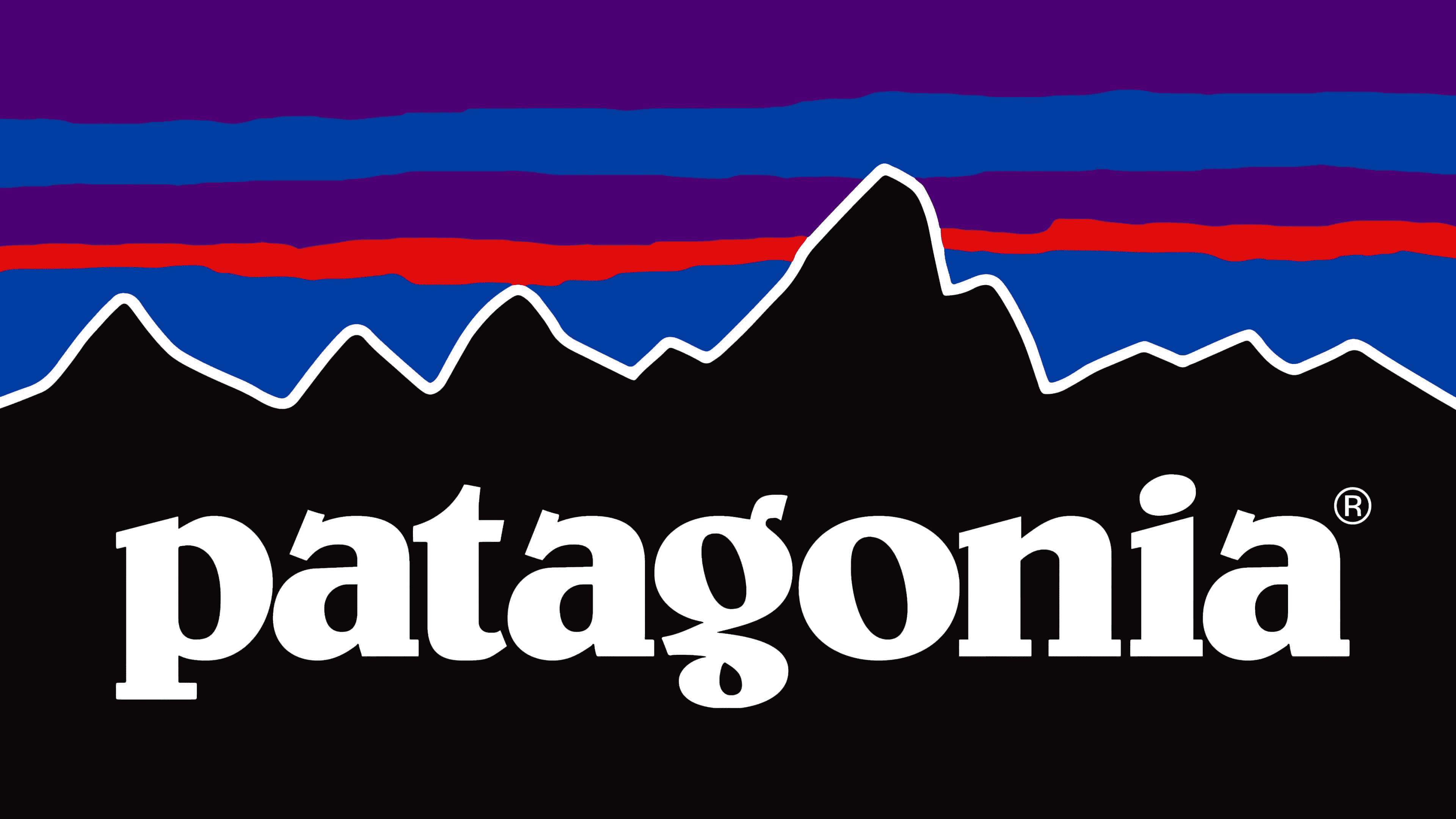
The world of skiing, with its pristine snow-covered slopes and breathtaking mountain landscapes, is undeniably linked to nature. However, the ski industry has yet to be immune to the environmental challenges of our times (Basberg et al.,2023). The good news is that many notable skiing brands are recognizing the importance of sustainability and making significant commitments to protect the environment. In this article, we will explore some of these global brands and how they are actively working to keep their promises.

1. Head - The Visionary of Sustainable Skiing
When it comes to ski gear, few names resonate as profoundly as Head. This industry giant has embarked on an inspiring sustainability journey, aiming to minimize its environmental footprint. Head's dedication to this cause extends across its extensive range of skiing equipment.
Keeping Their Promise
The company focuses on a multi-dimensional approach. One of their remarkable initiatives involves the recycling of materials used in ski production, significantly reducing waste. Head is also investing in sustainable manufacturing processes and making use of eco-friendly materials. The company understands that it is not just about creating the gear but also about how that gear reaches the user. As a result, they have adopted eco-conscious packaging and work continuously to improve the environmental performance of their products.

2. Atomic - A Force for Green Ski Innovation
Atomic, another titan in the skiing world, has been making waves with its environmental commitments. The company's dedication to eco-friendliness echoes throughout its skiing equipment range, from skis to bindings.
Keeping Their Promise
Atomic prioritizes responsible material sourcing, ensuring that its products are both durable and environmentally friendly. They also focus on manufacturing practices that minimize waste and reduce carbon footprint (Emerton et al.,2022). Additionally, Atomic promotes the repair and reuse of ski gear, actively encouraging their customers to extend the lifespan of their products. The company is a prime example of how innovation and environmental stewardship can go hand in hand. They've taken a proactive approach by investing in sustainable technologies and materials that enable the creation of high-performance skiing equipment while respecting the environment.

3. Blizzard - A Blizzard of Eco-Friendly Commitments
Blizzard, a major player in the skiing industry, is making its mark in environmental commitments. Their vision extends to creating skiing equipment that's top-notch in performance and gentle on the planet.
Keeping Their Promise
Blizzard is part of the movement to reduce the environmental impact of skiing gear. They focus on using recycled materials and responsible sourcing in their equipment, which significantly decreases their ecological footprint. Additionally, the company continuously explores ways to minimize waste, ensuring its manufacturing processes are as eco-friendly as possible. Blizzard's commitment to sustainability is a testament to their awareness of the skiing world's dependence on nature (Shourkaei et al.,2023). By embracing these eco-friendly practices, they actively contribute to protecting the natural landscapes that make skiing such a cherished sport.

4. Patagonia - A Champion of Sustainability
Patagonia, although primarily recognized for its outdoor apparel, has become a significant advocate for environmental awareness and sustainability within the skiing community. The company's unwavering commitment to sustainability is evident not only in its outdoor clothing but also in its ski gear (Shourkaei et al.,2023). Patagonia stands as a noteworthy example of a brand that prioritizes the well-being of the environment.
A Pledge to Sustainability
Patagonia's dedication to sustainability is deeply embedded in its DNA. The brand's commitment goes far beyond marketing catchphrases; it is genuinely reflected in its products and practices. The following are some of the key ways in which Patagonia champions sustainability:
1.Recycled Materials: Patagonia recognizes the importance of responsible material sourcing. Many of their products, including ski clothing and gear, incorporate recycled materials. By doing so, they reduce the demand for new resources and minimize their carbon footprint
2. 1% for the Planet: Patagonia is a proud member of the "1% for the Planet" initiative. This means they pledge to donate 1% of their annual sales to support environmental causes. These contributions are directed to organizations working to protect and preserve the Planet.
Keeping Their Promise
While using eco-friendly materials and supporting environmental causes are significant steps, Patagonia goes the extra mile to ensure they live up to their sustainability commitments. One of the most notable ways they do this is through their "Worn Wear" program.
Launched in 2018, Patagonia's "Worn Wear" program is a groundbreaking initiative that promotes reusing and recycling outdoor clothing and gear. It encourages customers to take a proactive role in extending the lifespan of their products. "Worn Wear" works in the following ways
1. Repair and Reuse: Patagonia actively encourages its customers to repair their clothing and gear. They offer guides and tutorials on how to fix common issues, from stitching up small tears to replacing zippers. By enabling customers to repair their items, Patagonia fosters a culture of longevity and durability.
2. Buying Used: One of the most remarkable aspects of "Worn Wear" is that Patagonia sells used products. Customers can find a range of pre-owned Patagonia gear, from jackets to backpacks, on their website. This promotes the idea of giving used items a second life, reducing waste, and making sustainable choices more accessible.
The Impact of "Worn Wear"
The "Worn Wear" program has had a significant impact, both environmentally and culturally. It encourages a shift in the way consumers view and interact with their outdoor clothing and gear. Instead of disposing of items that are slightly worn or have minor imperfections, customers are encouraged to repair and recycle, reducing the overall environmental impact of outdoor gear. The program also aligns with Patagonia's larger mission of reducing consumption. Instead of constantly buying new products, "Worn Wear" promotes the idea that quality gear can last for years with proper care and maintenance (Shourkaei et al.,2023). This approach helps to address the issue of fast fashion and disposable consumerism.
A Holistic Approach to Sustainability
Patagonia's commitment to sustainability isn't limited to its products and initiatives. They're also actively involved in advocating for environmental causes and promoting responsible practices throughout their supply chain. They're committed to fair labor practices and constantly seek to improve the environmental impact of their operations.

5. The North Face - Protecting the Outdoors
The North Face, a household name in the outdoor sports industry, has set the bar high when it comes to protecting the environment. The company's commitment to sustainability extends to its ski clothing and equipment, and it's not just about words; The North Face takes action to back its promises.
Setting Ambitious Sustainability Goals
The North Face has embarked on a journey to reduce its environmental footprint and become a leader in eco-conscious outdoor gear. The company has set ambitious sustainability goals that encompass various aspects of its operations.
1. Reducing the Carbon Footprint: One of The North Face's key sustainability goals is to reduce its carbon footprint. This means actively working to minimize the greenhouse gas emissions produced by their operations, including the manufacturing and transportation of their products.
2. Minimizing Water Consumption: Water is a precious resource, and The North Face is committed to using it responsibly (Emerton et al.,2022). They aim to minimize water consumption in their manufacturing processes and are actively exploring ways to make their products more water-efficient.
3. Responsible Down and Ethical Sourcing: The North Face places a strong emphasis on the materials used in their products. They are dedicated to using responsible materials and ensuring that their materials are ethically sourced. Responsible down means that the down used in their products comes from ducks and geese that are treated humanely and not force-fed or live-plucked
Keeping Their Promise
What truly sets The North Face apart is its tangible commitment to sustainability. They don't just ask their customers to buy into their vision; they actively engage their customer base and lead by example.
1. "Clothes the Loop" Initiative: The North Face's "Clothes the Loop" initiative is a remarkable step toward reducing textile waste. It encourages customers to bring in old clothing and footwear, regardless of the brand. This clothing is then recycled, and its fibers are used to create new products. This initiative reduces waste, promotes recycling, and extends the life of textiles.
2. "Renewed" Line: The "Renewed" line is another innovative approach The North Face has taken to reduce waste. They sell refurbished and remanufactured products, which include clothing and gear. These products go through a rigorous process of cleaning, repairing, and renewing. By offering refurbished items, The North Face extends the lifespan of its products and significantly reduces the environmental impact of producing new gear.
Why "Clothes the Loop" and "Renewed" Matter
Textile waste is a significant global problem. The fashion and outdoor industry contribute to this issue with discarded clothing and gear. The "Clothes the Loop" and "Renewed" initiatives aim to address this problem in a meaningful way. By recycling old clothing and gear, The North Face prevents these items from ending up in landfills, where they would contribute to environmental degradation (Emerton et al.,2022). The recycling process reduces the need for new raw materials, which, in turn, conserves natural resources. It's a win-win situation for the environment and the customer. These initiatives also contribute to the circular economy, where products are designed to be reused, refurbished, or recycled rather than disposed of. The North Face's efforts are part of a broader movement towards a more sustainable and responsible approach to consumer goods.
The Bigger Picture
The North Face's dedication to sustainability continues beyond these initiatives. The company is actively engaged in reducing its environmental impact throughout its supply chain. They also work with organizations and initiatives such as the Sustainable Apparel Coalition and 1% for the Planet to promote sustainability and environmental stewardship (Shourkaei et al., (2023).

6. Burton Snowboards - Eco-Friendly Snowboards
Burton Snowboards, a global leader in the snowboard manufacturing industry, is not only known for its high-quality products but also for its unwavering dedication to sustainability. The company's commitment to the environment is not just a slogan; it's embedded in the very core of its business, particularly in the production of eco-friendly snowboards.
Keeping Their Promise
When it comes to snowboard production, Burton Snowboards has made substantial efforts to ensure that its products are as environmentally friendly as possible. The following are some of the key ways in which they uphold their commitment to sustainability:
1. Eco-Friendly Materials: Burton proactively uses eco-friendly materials in their snowboards. One notable example is the use of FSC-certified wood cores. The Forest Stewardship Council (FSC) certification ensures that the wood used is sourced from responsibly managed forests (Basberg et al.,2023). This means that when you ride a Burton snowboard, you can feel confident that the wood core is derived from sustainable and well-managed timber resources.
2. Bio-Based Resins: In addition to wood cores, Burton employs bio-based resins in their snowboard production. These resins, derived from renewable plant-based sources, reduce the use of petroleum-based materials (Islam et al., (2022). This not only lessens the reliance on fossil fuels but also decreases the carbon footprint of their snowboards.
Certified B Corporation - Meeting Rigorous Standards
One of the most noteworthy aspects of Burton's commitment to sustainability is its certification as a B Corporation. B Corps are businesses that meet high social and environmental standards while considering the impact of their decisions on their workers, customers, suppliers, community, and the environment. This certification isn't handed out lightly; companies have to meet rigorous criteria and undergo a comprehensive assessment to prove their commitment to positive social and environmental change. Burton Snowboards proudly wears this badge, highlighting their dedication to being more than just a profit-driven business.
Educating Customers through "Leave No Trace"
Burton's commitment to sustainability extends beyond the factory floor. They understand that making eco-friendly products is only one part of the equation. Educating their customers about responsible practices in the great outdoors is equally essential. That's where their "Leave No Trace" program comes into play (Emerton et al.,2022). This initiative educates Burton's customers about environmental stewardship and the importance of preserving natural places. It encourages responsible outdoor practices, such as minimizing impact on the environment,
properly disposing of waste, and respecting the natural beauty of the areas where snowboarders enjoy their sport.
The Bigger Impact
Burton Snowboards' dedication to sustainability in snowboard production is more than just a nod to environmental responsibility. It has a broader impact on the snowsports industry and the culture of outdoor recreation. By using eco-friendly materials, they set a higher standard for the industry, challenging other manufacturers to consider the environmental impact of their products. Burton's commitment to FSC-certified wood cores and bio-based resins promotes more sustainable sourcing and manufacturing practices within the industry. Their certification as a B Corporation serves as a reminder that businesses can be forces for good, and profit doesn't have to come at the expense of the Planet. It encourages other companies to follow in their footsteps, not only in the snowsports sector but across various industries. The "Leave No Trace" program, which educates customers about environmental stewardship, helps create a culture of responsible outdoor recreation (Islam et al., (2022). It reminds snowboarders and outdoor enthusiasts to cherish and protect the natural places they enjoy. It's a small step towards ensuring that the outdoors remains pristine and unspoiled for future generations.

7. Fischer Sports - Pioneering in Sustainable Skiing Equipment
Fischer Sports, a prominent name in the skiing equipment industry, is carving a path toward sustainability. Their commitment to environmental responsibility is not just a side note; it's a core value that shines through in the production of skis and boots.
Keeping Their Promise
1. Sustainable Materials and Processes: Fischer Sports understands that the journey to sustainability begins with the materials and processes used in production. To minimize their environmental impact, they focus on sustainable choices at every turn.
2. Reducing Waste and Energy Consumption: Fischer is committed to reducing waste in their manufacturing process. By optimizing their operations, they minimize the materials that go to waste, which not only benefits the environment but also makes good business sense.
3. Energy consumption is another area of focus. The company actively seeks ways to reduce their energy usage, thus lowering their carbon footprint and contributing to a more sustainable future.
4. Environmentally Friendly Adhesives: One standout example of Fischer's dedication to sustainability is their use of water-based and solvent-free adhesives in ski production. These adhesives not only bond their skis effectively but also reduce harmful chemical emissions, making the process more environmentally friendly.
5. "We Care" Program: Fischer Sports continues beyond taking actions within its manufacturing facilities. Their "We Care" program is a testament to their commitment to sustainability. This program is dedicated to improving the environmental performance of their products and processes, with a focus on minimizing their ecological footprint.

8. Rossignol - A Commitment to Eco-Friendly Practices
Rossignol, a well-known brand in the skiing world, is actively pursuing eco-friendly practices in its operations. The company has embraced sustainability by using responsibly sourced materials in its ski equipment. They are also dedicated to reducing the environmental impact of their packaging.
Keeping Their Promise
Rossignol is a member of the Sustainable Apparel Coalition, which focuses on sustainability throughout the supply chain. The company also uses recycled materials in their products and continuously explores ways to decrease their ecological footprint.

9. Mountain Hardwear - Responsible Gear
Mountain Hardwear, a specialist in high-performance clothing and gear for skiing and other outdoor adventures, has a firm commitment to environmental responsibility. Their approach centers on the use of eco-friendly materials and ethical manufacturing processes.
Keeping Their Promise
1. Eco-Friendly Materials and Ethical Manufacturing: Mountain Hardwear knows that responsible gear starts with the right materials. They prioritize eco-friendly materials, which not only make their products more sustainable but also contribute to reducing the overall environmental impact of outdoor activities.
2. Their ethical manufacturing processes ensure that the gear is made under fair and humane conditions, which is not only good for the environment but also reflects a commitment to social responsibility.
3. "1% for the Planet" and Supporting Conservation Efforts: Mountain Hardwear is not content with just making sustainable gear; they take the extra step to contribute to environmental causes. They are part of the "1% for the Planet" initiative, pledging to donate at least 1% of their annual sales to support environmental nonprofits.
Through this initiative, they have donated more than $2 million to organizations that are actively working to protect and preserve our planet. This financial support helps these organizations in their critical missions.
4. Mountain Hardwear also partners with organizations like the Conservation Alliance to support conservation efforts. By working together with these organizations, they amplify their impact and contribute to the broader goal of safeguarding the environment

10. Arc'teryx - Sustainable Outdoor Gear
Arc'teryx, renowned for its high-quality outdoor gear, places sustainability at the forefront of its business. The company is determined to reduce its environmental footprint through responsible material sourcing and manufacturing practices.
Keeping Their Promise
Arc'teryx actively supports initiatives like the Higg Index, which measures the environmental and social impact of products (Emerton et al.,2022). They also advocate for "repair, reuse, recycle" and offer a product care program to extend the life of their gear.

11. Salomon - Upholding Environmental Values
Salomon, a well-established brand in the skiing and snowboarding industry, upholds strong environmental values. The company has made significant strides in reducing its carbon footprint and minimizing waste in the production of skis and ski equipment.
Keeping Their Promise
Salomon is part of the "Sustainable Apparel Coalition" and has committed to measuring and improving its environmental and social impact. The company also emphasizes the importance of repairing and reusing outdoor gear.

12. Black Diamond - Sustainable Climbing and Skiing Gear
Black Diamond, a company renowned for its climbing and skiing gear, is committed to environmental sustainability. They prioritize eco-friendly materials and manufacturing processes, as well as ethical sourcing.
Keeping Their Promise
Black Diamond focuses on product repair and encourages customers to send in their used gear for refurbishment. The company's factory in Asia has been audited for ethical labor practices, ensuring the welfare of its employees.

13. Dynafit - Sustainable Ski Mountaineering Gear
Dynafit, a leader in the ski mountaineering gear industry, takes its commitment to sustainability seriously. The company is not just chasing trends; they are actively pursuing eco-friendly materials and technologies in their products, aiming to reduce their impact on the environment.
Keeping Their Promise
1. A Focus on Sustainability: Dynafit understands that making sustainable gear begins with the materials and processes used in production. They are committed to reducing their environmental footprint at every stage.
2. The "Zero Impact" Initiative: Dynafit is part of the "Zero Impact" initiative, which is aptly named for its clear objective. The initiative centers on environmental sustainability and aims to make products with as little impact as possible.
3. Repair and Reconditioning: Dynafit doesn't just stop at producing eco-friendly gear; they are also committed to prolonging the lifespan of their products. They promote repair and reconditioning of their gear. This approach not only reduces waste but also encourages customers to invest in high-quality gear that can last for years.
These notable skiing brands have not only made commitments to the environment but are actively working to uphold their promises. They are incorporating sustainable materials, reducing waste, and supporting environmental causes. By taking these actions, they are not only helping to protect the natural landscapes that skiers cherish but also setting an example for the outdoor industry as a whole. In a world where our natural playgrounds are increasingly under threat, these brands are proving that enjoying the great outdoors and protecting it can go hand in hand.
Reference
- Basberg, B., Oklevik, O., & Kwiatkowski, G. (2023). Brand Experience in the Ski Industry Brand: Does Environmental Concern Matter?. European Research Studies Journal, 26(3), 482-497.
- Costa, J., Montenegro, M., & Gomes, J. (2019). Lessons from companies and destinations while leading the way for sustainable development. Worldwide Hospitality and Tourism Themes, 11(6), 760-763.
- Emerton, R., Brimicombe, C., Magnusson, L., Roberts, C., Di Napoli, C., Cloke, H. L., & Pappenberger, F. (2022). Predicting the unprecedented: forecasting the June 2021 Pacific Northwest heatwave. Weather, 77(8), 272-279.
- Islam, M. Z., Sarker, M. E., Rahman, M. M., Islam, M. R., Ahmed, A. F., Mahmud, M. S., & Syduzzaman, M. (2022). Green composites from natural fibers and biopolymers: A review on processing, properties, and applications. Journal of Reinforced Plastics and Composites, 41(13-14), 526-557.
- Moscovici, D. (2022). Ski resort closures and opportunities for sustainability in North America. Land, 11(4), 494.
- Shourkaei, M. M., Taylor, K. M., & Dyck, B. (2023). Examining sustainable supply chain management via a social‐symbolic work lens: Lessons from Patagonia. Business Strategy and the Environment.
